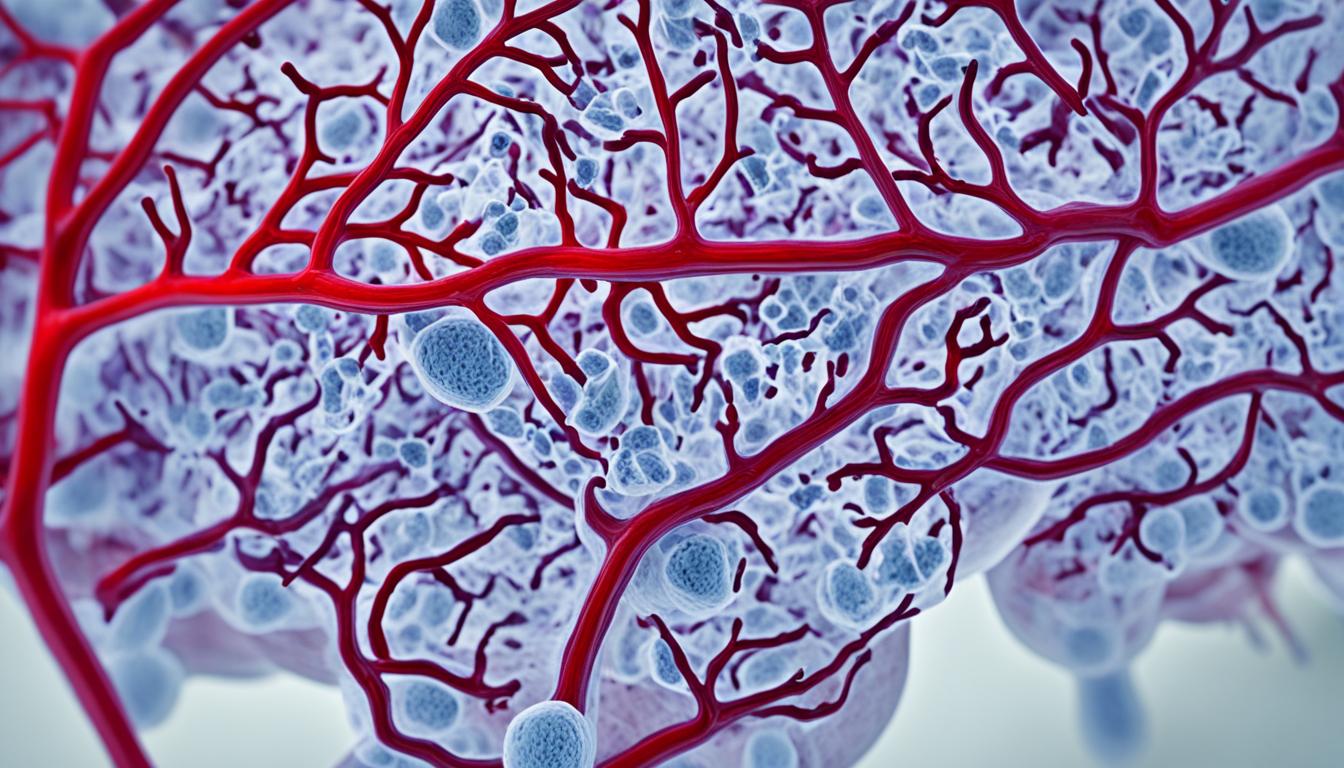Cranial arteritis, also called giant cell arteritis, affects the blood vessels in the head. It often targets the temples. This disease causes these arteries to be inflamed. This can lead to symptoms like bad headaches, a sore scalp, pain in the jaw, and trouble seeing. Serious, if not treated, it can cause blindness.
The main cause of cranial arteritis is not completely understood. It is thought to involve the body’s immune system mistakenly attacking the arteries. Age is a big factor, with most cases found in adults over 50. Women seem to get it more often than men do. Other risks might include your race or having family members with the disease.
Doctors diagnose cranial arteritis by looking at the symptoms, doing a physical check, and taking a sample from a temporal artery. The main treatment is to use drugs that fight inflammation like corticosteroids. This helps lower the effect the disease has on eyesight. But, there’s hope in stem cell therapy, which is a new approach for this disease.
Key Takeaways:
- Cranial arteritis, also known as giant cell arteritis or temporal arteritis, is an inflammatory disease affecting the blood vessels in the head.
- Symptoms include severe headaches, scalp tenderness, jaw pain, and vision problems.
- Untreated cranial arteritis can lead to blindness.
- While the exact cause is unknown, it is believed to involve abnormal immune attacks on artery walls.
- Risk factors include age, gender, race, and a family history of the disease.
- Diagnosis involves a combination of symptoms, physical examination, and a temporal artery biopsy.
- Treatment typically involves the use of corticosteroid medications to reduce inflammation and prevent vision loss.
- Stem cell therapy shows promise as a potential treatment option for cranial arteritis.
Symptoms of Cranial Arteritis
Cranial arteritis, known as giant cell arteritis, brings a range of symptoms. These symptoms can affect different parts of the body. Knowing these signs is key to quick diagnosis and treatment. The main symptoms include:
- Headache: Severe headaches, mainly around the temples, show up. They can last long and make you feel very bad.
- Vision problems: You might get blurred vision, see double, or lose vision in one eye suddenly.
- Jaw pain: Pain in the jaw when eating or opening your mouth wide is common. It usually focuses on the jaw joint area.
- Fatigue: Tiredness that is very strong and constant can happen, affecting your daily life.
- Weight loss: Not trying to lose weight but still losing it could be because of this condition.
- Fever: A mild fever might happen, showing there is inflammation in the body.
- Neck stiffness: Feeling stiff in the neck, shoulders, or hips is a sign. This might also be a sign of polymyalgia rheumatica, a related condition.
If you notice any of these symptoms, talk to a doctor right away. Getting diagnosed and treated early is important. This can help manage the disease and avoid serious issues like losing your vision.
Causes and Risk Factors of Cranial Arteritis
The cause of cranial arteritis is unknown. It is thought to be an autoimmune disease. This illness is a type of giant cell arteritis. It causes blood vessel inflammation, especially in the head’s blood vessels like those near the temples.
Autoimmune diseases happen when the immune system attacks the body. In cranial arteritis, the immune system harms the blood vessels, leading to swelling and damage.
Many things can lead to cranial arteritis. Getting older is a big risk, with most patients being over 50. As we age, our immune system changes and can make mistakes, leading to these diseases.
Having a family history of cranial arteritis also increases your risk. Certain genes might make some people more likely to get this condition. These genes might play a role in how our immune system works or reacts.
Living in certain environments might also be a factor. It’s thought that some infections could trigger these problems. But, we’re not sure about the exact infections or how they team up with our genes.
Polymyalgia rheumatica is another health issue linked with cranial arteritis. It’s a disease that makes your muscles hurt and hard to move, especially in the shoulders and hips. Both diseases share some risk factors and often occur together.
In short, cranial arteritis is a problem where your body mistakenly attacks your head’s blood vessels. It’s connected to getting older, certain genes, your environment, and some infections. If the disease runs in your family or you have polymyalgia rheumatica, you’re more at risk. More study is needed to really understand and treat cranial arteritis well.
Diagnosis and Treatment of Cranial Arteritis
Diagnosing cranial arteritis involves carefully looking at symptoms, examining the patient, and using tests. Doctors look for signs of inflammation in the temporal artery. They often do a biopsy, removing a small piece of tissue for a closer look.
The main treatment for cranial arteritis is using corticosteroids like prednisone. These drugs help cut down inflammation and prevent vision loss. Yet, using them for a long time can cause side effects.
Doctors are now studying other treatments. One of these is stem cell therapy. This approach aims to use stem cells to fix blood vessel cells and reduce artery inflammation. Stem cell therapy shows a lot of promise for the future of treating cranial arteritis.
This new method could be a game changer for cranial arteritis treatment. It might be better than relying only on corticosteroids. But, we still need more studies to understand fully how stem cell therapy can help people with this disease.

